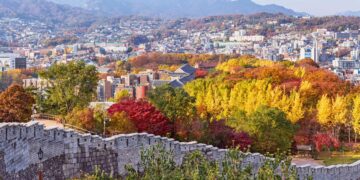Last Updated on 3 years by admin
South Korea is surrounded by water on three sides and has various climate zones and high precipitation. These conditions lead to a diversity of wildlife. The diverse wildlife of South Korea includes more than 18,000 species of animals. Due to urbanization, many of them are on the verge of extinction. Thanks to the government’s and conservationists’ efforts, the country is still home to many majestic wild animals.
The ten wild animals native to South Korea described here include large mammals like leopards and whales to small hares. Whether you’re a nature enthusiast or simply looking to learn more about the country’s wildlife, this article is sure to offer an engaging and informative read.
Amur Leopard
Amur Leopard or Siberian Tiger is South Korea’s official national animal. They are one of the world’s rarest big cats, and its scientific name is Panthera tigris altaica, while other nickname names are Korean tiger, Manchurian tiger, and Ussurian tiger. This originated in Russia and migrated through China and lives in dense forests and mountainous regions
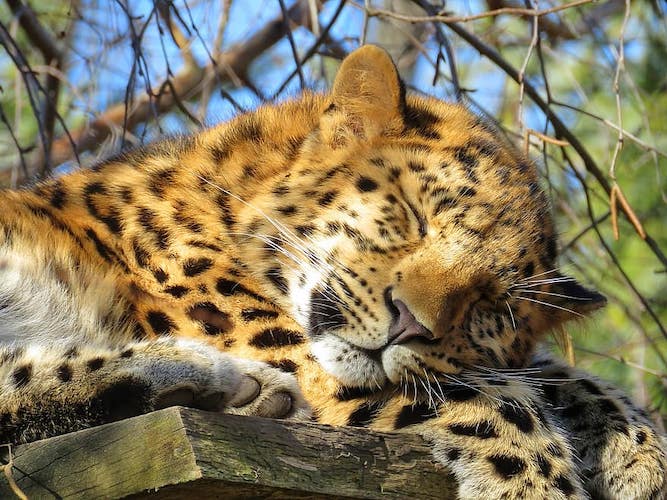
Amur Leopard has distinct black stripes flanking reddish-orange and white fur. They are historically the largest cat in the world and are in the list of endangered wildlife driven to near-critical extinction. Seoul Zoo is making efforts for the conservation of Korean leopards.
Common Minke Whale
This grayish purple, and black whale is the second smallest whale in the world, about 7-8 m in length. You can find it in the waters surrounding the coasts of South Korea. The common Minke whale is the primary source of whale meat in meat markets, and its population has diminished due to illegal hunting for meat.
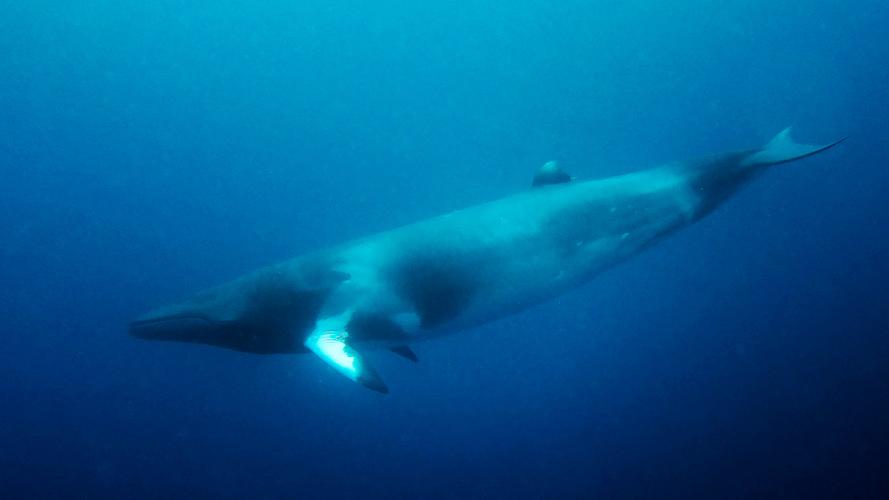
They generally eat small fish, eels, and other water animals. However, Killer whales are known to prey on Minke whales. Their lifespan is 40-50 years, and they are generally in small family groups of two-three.
Wild Boar
The Wild Boar is a dark coarse furred animal that is big, strong, and fast and can potentially harm humans. They roam freely in the mountainsides and, due to their overpopulation, sometimes invade cities and rampage through the streets in search of food. You can see wild boars venturing into busy areas.
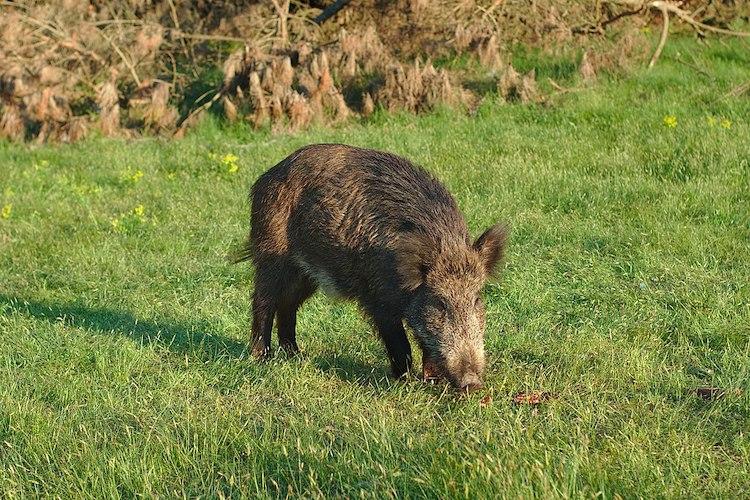
Wild boars are pest animals, and you can see them lurking in South Korea’s topography. Wild boars find their food in the wooded areas they inhabit and from streams of water, like bird eggs, rodents, mushrooms, fish, etc.
Read More: South Korea Travel Guide – Best Time of Year to Visit South Korea
Water Deer
The water deer is a unique small deer native to China and Korea. The South Korean water deer subspecies has the scientific name Hydropotes inermis argyropus. It has a small frame with golden brown fur and white underbelly. It is colloquially nicknamed as vampire deer due to prominent downward-pointing canine teeth coming out from the mouth as tusks, unlike other deer.

Water deer are indigenous to the lower reaches of mountains, swamps, and grasslands alongside rivers. In South Korea, they are in larger numbers since the demilitarized zone has provided a protected habitat for them. Water deer are also proficient swimmers. Their favorite foods are aquatic vegetation like weeds, grass, fruits, and more. Korean water deer has been designated as “harmful wildlife” due to its destructive nature and has been found destroying property and farms.
Read More: Best Running Routes in Seoul
Korean goral
The Korean goral or long-tailed goral (scientific name: Naemorhedus caudatus) is a goat-like antelope with a long, bushy tail, a light grayish brown body, and a white patch on the throat. These reside in rocky areas or caves that other animals cannot access easily.
You can find them in mountain regions mainly. Gorals eat a wide range of grass, wild fruits, leaves, shoots, buds, moss, and acorns.
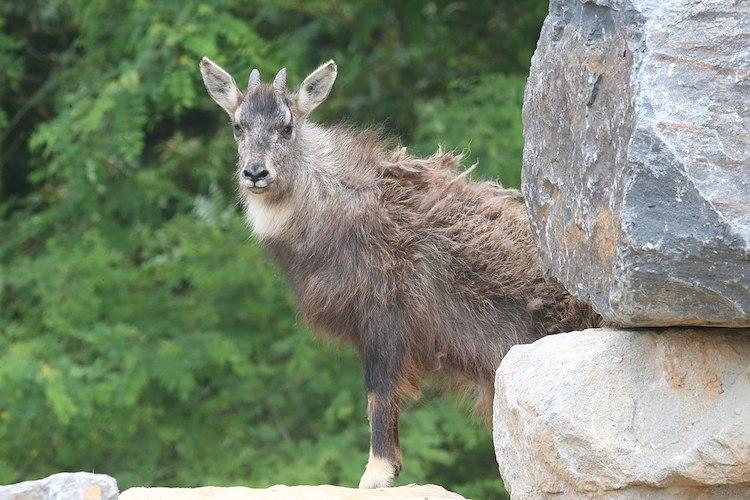
The goral population was only about 40 animals in 1982 in South Korea, and it has increased to around 700-800 now due to conservation efforts. The South Korean government designated N. caudatus as an Endangered Species in 1997.
Siberian Musk Deer
The Siberian musk deer has elongated canines in both males and females. It is a small deer with adaptations that give it an ability to walk through deep snow. They can also run extraordinarily fast to save themselves from predators. Their pelage is dark brown with many dorsal yellow spots. Musk deer differ sharply from other deer species.
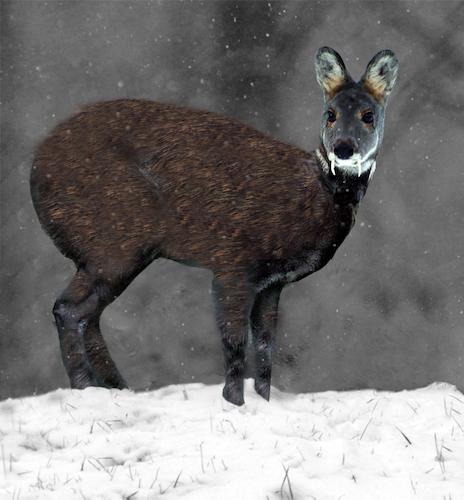
Musk deer prefer grass, soft leaves, buds, mushrooms, and the bark of trees. When feeding, these deer can climb on inclined trunks up to 3-4 m above ground. In 1997, the Ministry of Environment added the Siberian musk deer to the South Korean Endangered Species list.
Lynx
The Lynx is another native cat to South Korea, like a tiger but much smaller. This solitary cat has a coat cover with beautiful sand brown with dark brown spots, and thick fur. The fur is a barrier against harsh temperatures and keeps them warm during frosty winters.
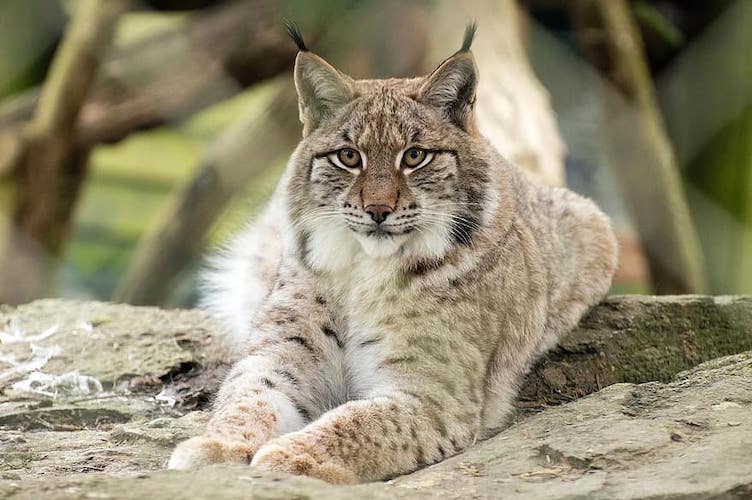
You can find these animals in the woods of South Korea and in montane forests in the Korean DMZ. They are night-hunting, stealthy cats, and you will rarely see them in the forests.
Asian Black Bear
The well-built Asian Black Bear is beautiful due to its dark black fur and ‘moon’ or ‘V-shaped white patch on its chest. You can find this slender, 300 pounds tree-dweller in forests, is also known as a ‘moon bear.’ The Asian Black Bear feeds on eggs, insects, bees, and termites, along with fruits, nuts, and different grasses.
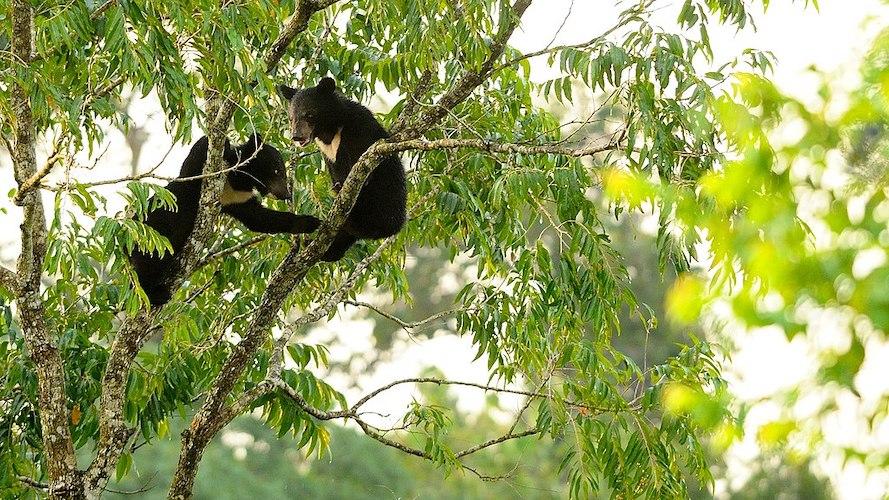
South Korea is making significant efforts to conserve the beautiful Black Bear, one of the most endangered mammals, and has been successful in breeding with help from conservationists. Cubs of the species imported from other countries are released into Jirisan National Park, the largest mountain national park in Korea.
Read More: Cherry Blossoms in Korea – Where to Go for The Most Beautiful Places?
Cranes: Red-Crowned and White-Naped
These two large crane species, Red-Crowned and White-Naped, are native to South Korea. Each of them has a unique look. The red-crowned one is 1.2 m to 1.5 m tall, and has a red patch on its head, a bright white body with vivid black wing tips and a neck. You can find the red-crowned crane within wetlands and along rivers.
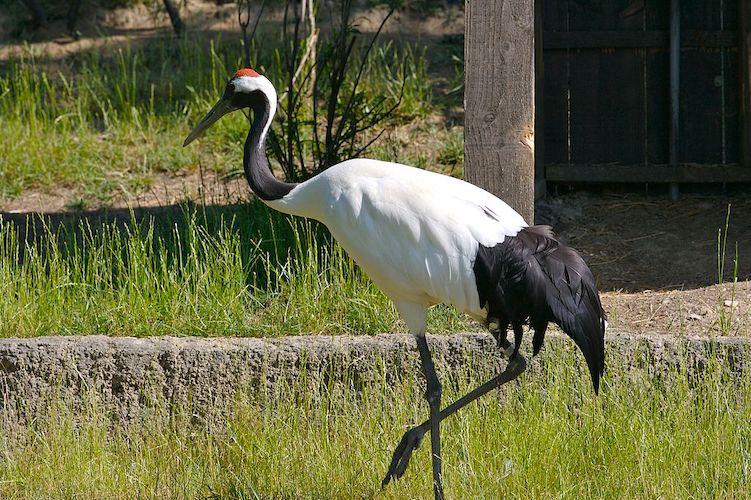
The white-naped crane has mostly white, silver, dark grey, and little bits of black throughout with pinkish legs and looks like the red-crowned crane. They inhabit grassy marshes, wet meadows, and reed beds in broad river valleys. You can find them in the Demilitarized Zone of South and North Korea.
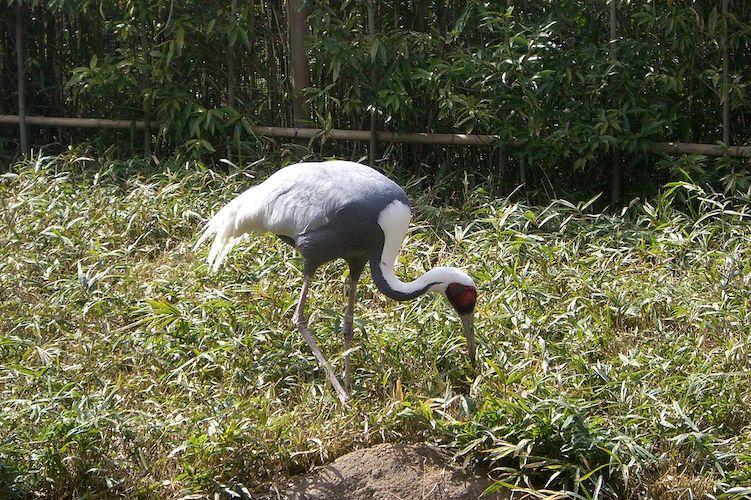
The crane is a symbol of luck in Korean culture, and these two are now on the list of endangered wildlife.
Korean Hare
The hare species only inhabiting South Korea, Korean Hare, is considerably heavier with a darker dorsal pelage of overall gray fur. The tip of hairs on the chest and tail are pinkish-gray, and a white forehead spot is common in most of these hares.
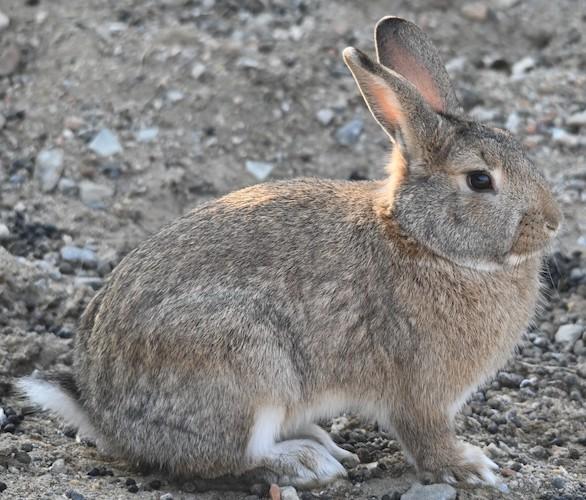
Korean hares were once common, but their populations have decreased significantly due to excessive hunting and habitat destruction by development. The South Korean government removed it as a game species in 2005 because of declining populations, and the Ministry of Environment listed the Korean hare as a candidate for Endangered Species in 2018.
Read More: Is South Korea Safe to Travel? What You Need to Know Before Planning the Trip


